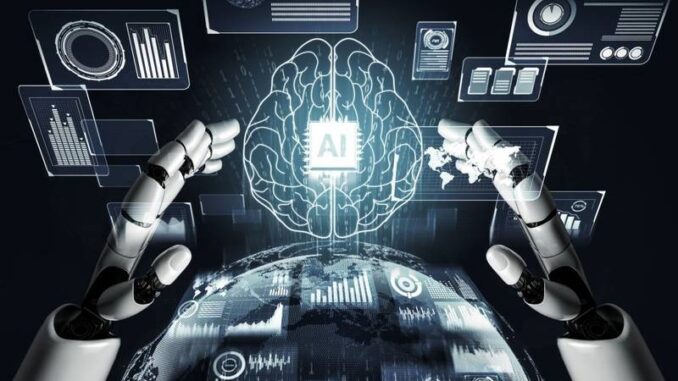
Driving sustainable improvements with AI involves leveraging artificial intelligence technologies to enhance practices and processes across various sectors
while promoting environmental and social sustainability. Here are several key ways AI can contribute to sustainable improvements:








### 1. **Energy Management**
– **Smart Grids:** AI can optimize energy distribution by predicting demand and managing supply from renewable sources, reducing waste.
– **Energy Efficiency:** AI algorithms can analyze energy usage patterns in buildings and industrial processes to identify areas for improvement and recommend energy-saving measures.
### 2. **Resource Optimization**
– **Supply Chain Efficiency:** AI can optimize supply chain operations to minimize waste and reduce carbon emissions, ensuring that resources are used more judiciously.
– **Predictive Maintenance:** In manufacturing, AI can predict equipment failures before they occur, reducing downtime and the need for replacement parts, which can lead to less waste.
### 3. **Sustainable Agriculture**
– **Precision Farming:** AI tools can analyze soil health, weather patterns, and crop conditions to help farmers make better decisions about planting, watering, and fertilizing, thus reducing resource use.
– **Pest and Disease Management:** AI can help in early detection of agricultural pests and diseases, allowing for targeted interventions that minimize the need for pesticides.
### 4. **Waste Management**
– **Smart Sorting:** AI-powered image recognition can enhance sorting processes at recycling facilities, improving recycling rates and reducing landfill waste.
– **Waste Prediction:** AI can analyze data to predict waste generation patterns, helping municipalities and organizations optimize waste collection and processing.
### 5. **Transportation and Mobility**
– **Traffic Management:** AI systems can analyze real-time traffic data to manage congestion, optimize public transportation routes, and reduce emissions from idling vehicles.
– **Autonomous Vehicles:** While still developing, AI in autonomous vehicles can lead to more efficient driving patterns, reducing fuel consumption and emissions.
### 6. **Climate Research and Modeling**
– **Environmental Monitoring:** AI can analyze satellite imagery and sensor data to monitor deforestation, climate change impacts, and biodiversity, aiding conservation efforts.
– **Climate Modeling:** Machine learning algorithms can improve predictions of climate patterns and associated risks, thus aiding in better planning and response strategies.
### 7. **Social Sustainability**
– **Access to Resources:** AI-driven platforms can help connect underserved communities with essential services, such as healthcare and education, promoting social equity.
– **Stakeholder Engagement:** AI can analyze public sentiment and feedback, helping organizations engage more effectively with stakeholders on sustainability initiatives.
### 8. **Circular Economy**
– **Product Life Cycle Assessment:** AI can help companies assess the sustainability of products through their entire life cycle, identifying opportunities for redesign and recycling.
– **Design Optimization:** AI-driven design tools can help create products that are more sustainable by optimizing for materials, waste, and ease of recycling.
### Implementation Considerations
– **Data Quality and Availability:** Effective use of AI requires high-quality, relevant data. Organizations should invest in data management systems.
– **Ethics and Accountability:** Implementing AI responsibly is crucial, ensuring that it aligns with ethical standards and promotes equity.
– **Collaboration:** Engaging stakeholders, including the public and community organizations, can enhance the effectiveness of AI-driven initiatives.
By strategically applying AI in these areas, organizations can not only improve their operational efficiency but also contribute to a more sustainable and equitable future.

Leave a Reply